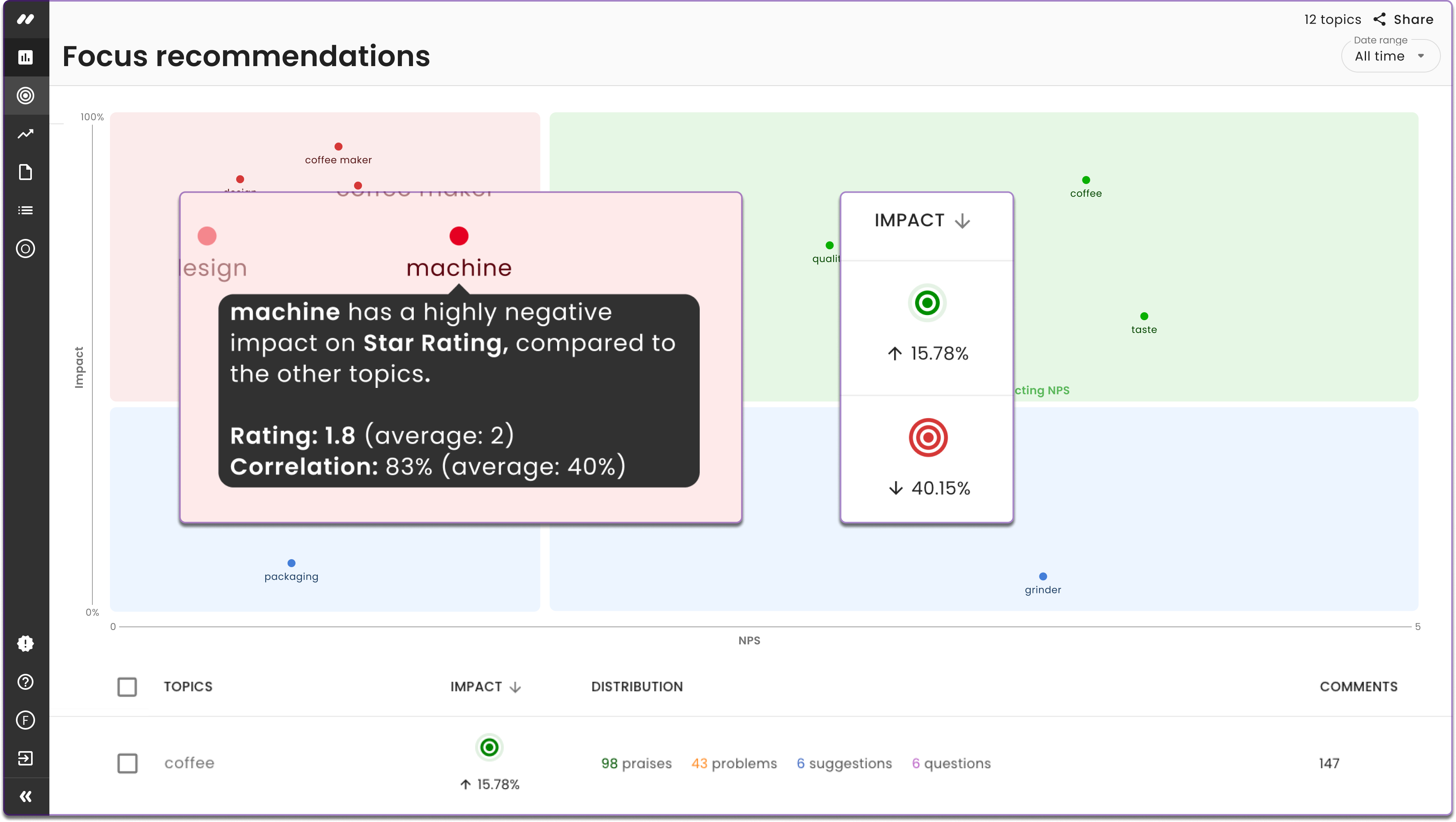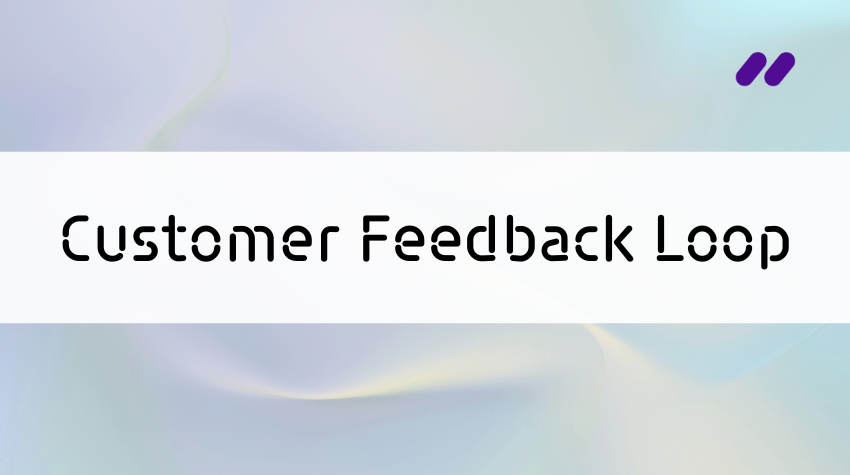In today’s digital age where online reviews and social media are not only easily accessible but trusted by most consumers, your brand reputation is in plain view – and it’s more impactful than you might realize.
Approximately 95% of consumers report consulting customer reviews before making a purchase, with 24% of consumers doing so before every single purchase.
And reviews are only one branch of the reputation tree — your social media platforms and user-generated content from influencers all make up how potential customers view your brand.
It’s essential to both understand and manage your reputation. If customers view you negatively, you need to take corrective action immediately. Alternatively, if customers love you, you should still nurture and improve that sentiment to sustain your growth.
What exactly is reputation management, and why does it matter? How can you understand your brand reputation without time-consuming, manual processes? And from there, how can you improve it?
Keep reading to learn the answers to these increasingly important questions to make sure potential customers are encouraged to make a purchase rather than look elsewhere.
Approximately 95% of consumers report consulting customer reviews before making a purchase, with 24% of consumers doing so before every single purchase.
Jump into our article to learn:
- What is brand reputation management?
- Why reputation management matters
- Where your brand gets its reputation
- Where to look to understand your reputation
- How to automate reputation management
- Don’t just maintain, but improve your reputation
1. What is brand reputation management?
Your online presence is everything these days. Only a few years ago, “online presence” meant just having a website and social media accounts. Now, the term extends to how customers view your brand based on information spread across platforms you control and those you don’t.
Brand reputation management is the practice of understanding how customers perceive your brand and taking steps to improve it. The practice involves aggregating and analyzing customer feedback about your brand and products, then taking action to correct any issues and reinforce what customers love.
The modern customer journey includes reading online reviews, social media posts, and other user-generated content about your brand.
2. Why reputation management matters
Your reputation has never had a more significant impact on customer purchase decisions. Generally, people trust reviews online just as much as personal recommendations from friends and family.
Word-of-mouth marketing has long been considered the most effective marketing tool, and in the modern world, it includes every review and post about your business. Understanding and responding to these reviews is essential to converting visitors into customers.
The modern customer journey includes reading online reviews, social media posts, and other user-generated content about your brand. Then, depending on what a potential customer finds, they’ll either complete the purchase or churn.
Understanding and managing your reputation ensures potential customers find positive information about you and motivates them to make that purchase.
Reputation management is an essential aspect of growing a loyal customer base. You can offer a fantastic product or service, competitive pricing, and a generous return policy — but if you have a bad reputation online, you’ll struggle to convert potential customers in the first place.
3. Where your brand gets its reputation
What creates your public reputation? We’ve already talked about how social media posts, reviews, and user-generated content mold your brand’s public perception, but what influences that feedback?
A few key factors influence how customers perceive your brand. Let’s explore some of them.
The purchase process
Simply making the purchase plays a significant role in influencing the customer experience. A convoluted, buggy, and frustrating checkout process will often result in poor reviews, even if everything else is perfect.
For example, imagine a three-star review like, “The product was great, and customer support was helpful, but I had to try four times just to buy the thing.” While not the worst review, it might still dissuade viewers from checking out, wanting to avoid a frustrating experience.
Your products and services
Your reputation is greatly influenced by the product or service you sell.
Is the product of high quality, delivers on its promises, and quickly shipped? Is your SaaS platform easy to get started with, fast, and responsive?
Missing any of these points can result in refund requests and negative feedback.
Contact center experiences
Most customers understand they might need to reach out to customer support, and doing so won’t necessarily result in bad feedback. But if they have a bad experience with your customer support team, they might take to social media or review sites to tell the world about it.
A frictionless and supportive contact center experience is essential to your overall reputation.
Investing too much time into gathering and analyzing customer feedback can have diminishing returns when relying on manual processes.
4. Where to look to understand your reputation
The process of reputation management starts with ongoing data collection. You need to find out what customers are saying about your brand, wherever that may be. Data collection largely focuses on:
- Online reviews: Reviews on your own website and any ecommerce platform are a goldmine for customer feedback. Amazon, Walmart, Sephora, or any other ecommerce platform where your products are sold will likely generate reviews — you need to continuously find and analyze them to understand your reputation.
- Social media posts and user-generated content: Are people posting about your brand on social media platforms? What about influencers? The greater an account’s reach, the more the post can impact your reputation. Other types of user-generated content, like videos, will also influence how customers view your brand.
- Customer surveys and direct feedback: While not usually public facing, what customers tell you directly is a powerful data point that indicates your reputation. Post-call or post-purchase surveys shed light on what customers are probably saying publicly as well.
Collecting all this data gives you a massive pool of information to analyze to determine your brand reputation. However, continuously monitoring and analyzing all these sources will rapidly become time consuming. Fortunately, automation can save time and improve the value of your data.
5. How to automate reputation management
Reputation management is essential, but you also still need to operate your entire business. Investing too much time into gathering and analyzing customer feedback can have diminishing returns when relying on manual processes.
Fortunately, advancements in automation, artificial intelligence, and natural language processing have made the process of review and brand reputation anlaysis efficient and more accurate.
Let’s explore how you can automate reputation management so you can focus on making informed and powerful changes to your business.
Begin with automated data collection
Earlier, we talked about all the data points that make up your brand reputation. Each of these data points needs to be monitored continuously, which makes manual data collection time intensive and near-impossible as your company grows.
For example, checking Amazon and Walmart for new reviews seems manageable in the beginning, but as you grow, you might get 20 new reviews per day. Additionally, social media posts can rapidly become unreasonable to find and aggregate manually.
Fortunately, automated tools like Keatext integrate with popular social media and ecommerce platforms to gather all of this important data. Rather than taking on a time-intensive task, you put the platform to work and focus on the actionable insights.
Leverage AI-powered sentiment analysis
Now you have all this data: customer surveys, social media posts, and customer reviews. How do you go about analyzing it to understand how customers truly feel?
Let’s imagine you have dozens of employees with the time to spare to read each data point and score it as positive or negative, then report on the main pain point or praise. Chances are, the same review would have entirely different analyses for each employee. Each individual would bring their own bias and interpretation that influence what they think the customer is saying.
Instead, sentiment analysis platforms like Keatext can rapidly analyze every data point, score it appropriately, and help you objectively understand the takeaway of the customer feedback.
You’ll not only save a significant amount of time, but you’ll gain more powerful and accurate insights than manual processes. Additionally, the platform can identify trends existing throughout hundreds of data points, giving you actionable feedback on how to improve.
Establish a benchmark and track changes
Benchmarks are essential throughout your business, allowing you to understand changes in revenue and expenses. Similarly, the right sentiment analysis platform will allow you to establish a benchmark for your reputation and evaluate how it’s changing over time.
In the beginning, you’ll have an accurate report of how customers feel about your brand. For example, you might discover that 42% of reviews are negative with an emphasis on poor customer support.
Over time, you can strive to reduce that percentage by improving your support team. Six months later, you might have 17% negative reviews and be able to measure the success of the actions you took.
Pinpoint exactly how to improve your reputation
If you look at your Amazon listing and see you have 2031 reviews with an average rating of 3.2 stars, you know there’s work to be done. But what exactly do you need to do?
An automated sentiment analysis platform will process every single review to understand the running themes that’s resulting in a less-than-ideal total score.
You might discover most of the negative reviews are about product quality, while the positive reviews are about customer support. You can then talk to your manufacturer and product design team to improve product quality.
And it goes much further than analyzing a single Amazon listing.
The right sentiment analysis platform will collect and analyze all of the data points we’ve mentioned so you have a well-rounded and accurate assessment of your brand’s reputation — then improve it with precise insights and recommendations.
Know exactly where to start improving your brand reputation with AI-based recommendations that predict what actions will have the greatest impact on your customer satisfaction score like NPS, CSAT, or star ratings.
6. Don’t just maintain, but improve your reputation
We’ve largely been focusing on fixing a negative brand reputation, but what if you already have a good reputation? Does that mean you coast and keep on as business as usual?
You can, but you’ll be holding yourself back. Instead, consistently improving your reputation can help further enhance customer loyalty, directly translating into business growth.
Companies with amazing reputations will still have detractors. Understanding why they leave negative reviews, even if they’re a small percentage, highlights how you can improve even more.
Don’t rest on a good reputation – strive for an outstanding one. You want potential customers to find reviews and social media posts praising your product or service, customer support, and overall brand. Keep pushing to improve your customer experience to improve your brand reputation.
Keatext is a valuable partner in managing your brand reputation
Reputation management begins by understanding your reputation — which can be incredibly time-consuming and inaccurate if handled manually.
Instead, embrace leading-edge tools with AI-powered sentiment analysis, automated data collection, and high-level insights to make brand reputation management simple and effective. Then, you can take corrective actions to improve your business’s specific aspects and reputation.
Keatext is an industry leader in sentiment analysis with an emphasis on providing data-driven insights into how to improve your reputation.
Know exactly where to start improving your brand reputation with AI-based recommendations that predict what actions will have the greatest impact on your customer satisfaction score like NPS, CSAT, or star ratings.

Leverage Keatext’s powerful text analytics and take a decisive step in enhancing your reputation. Reach out to us today and talk to one of our product experts to learn more.


